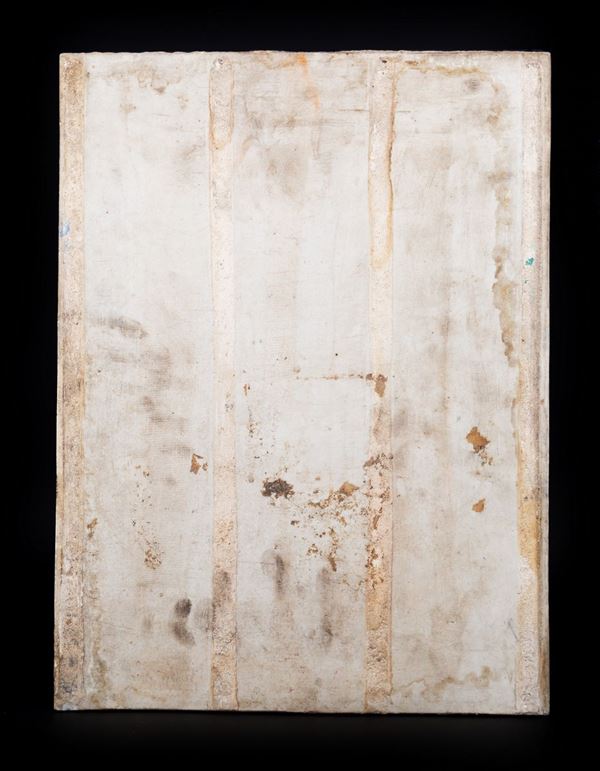*PREMIUM: A RARE QIANJIANG PORCELAIN PLAQUE SIGNED BY CHENG MEN, China, dated 1883
Rectangular in shape, it is extraordinarily painted on the orange-peel surface in light shades of green, blue, ochre and grisaille, typical of the Qianjiang style, where a sinuous river landscape is depicted beneath hills dotted with groves. At the top of the inscription is the signature of the artist Cheng Men (程门) and the cyclic date gui wei (癸未) corresponding to 1883.
Provenance: Private collection, Italy.
Catalogue notes: Qianjiang literally means "pale umber" and originates from a genre of painting on paper that arose during the Yuan dynasty (1279-1368) in China and was aimed at the literati class.
The term Qianjiang, as far as porcelain is concerned, refers to a style that emerged at the end of the 19th century, probably during the reign of Emperor Tongzhi (1861-1875), which interested many artists of the time, some even being part of the Imperial Kilns. This style of decoration on porcelain is closely related to the landscape paintings on paper and silk by master Huang Gongwang (1269-1354).
Cheng Men (1833-1908), considered to be one of the three Great Masters of Qianjiang on porcelain together with Jing Pinqing and Wang Shaowei, is assumed to have been the father of this particular style, of which he is certainly the pioneer and most important exponent.
An expert in calligraphy and painting, he worked for the Jingdezheng Imperial Kilns and became extremely well-known throughout China during the reigns of Xienfeng and Tongzhi.
He was strongly influenced by the great masters from the Tang dynasty to the Qing dynasty.
His works are always characterised by light colours for the areas and dark ink for the outlines, following the styles of the famous artists Huang Gongwang and Mi Yuanzhang.
His paintings covered a wide variety of themes, among which we particularly find landscapes, but also figures, flowers, fish, insects, birds and beasts.
Compare this plaque with Cheng Men's works illustrated in the book 'Qianjiang Ware in the Late Qing Period', editor in chief Xu Jinfan and Cheng Bing, Shanghai 2011, pp. 106-147, in particular pl. 2, 5, 8, 9, 10, 15 (15-1, 15-2, 15-3).
Compare also the landscape vase in the Muwentang Collection illustrated in "Chinese Porcelain of the Republic Period", Simon Kwan, Hong Kong 2008, p. 62, pl. 2.




